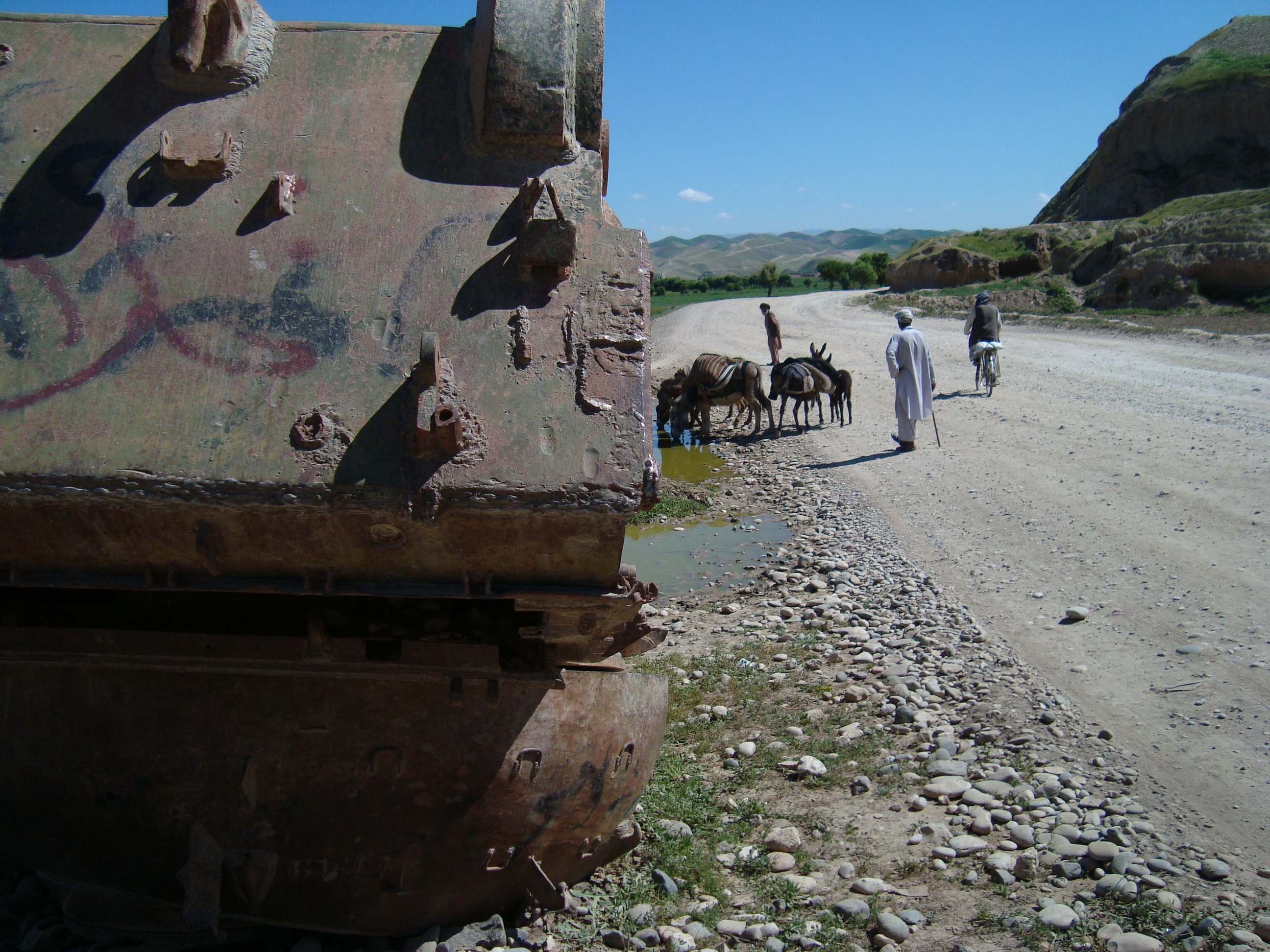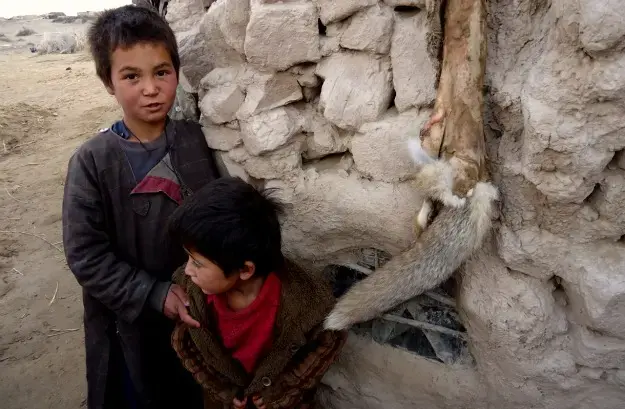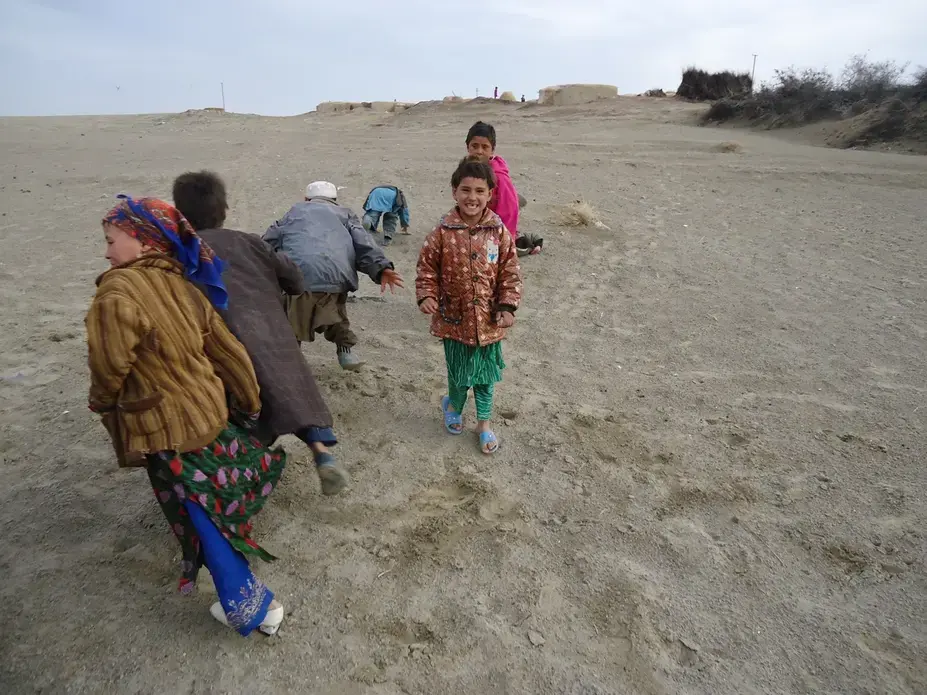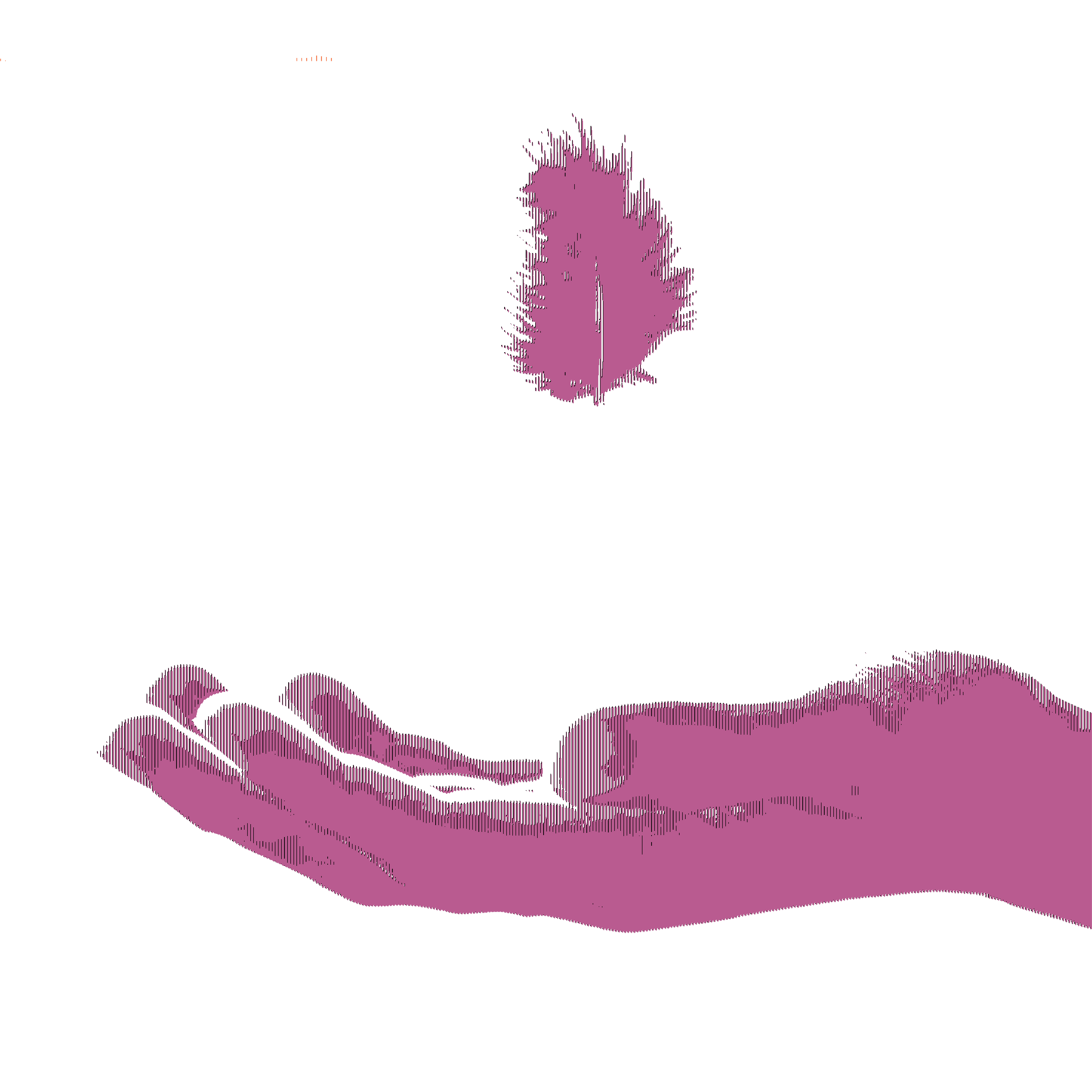The video runs 6 minutes and 53 seconds. The villagers call it "the film."
The footage jerks between a road hugging a mountainside of Kunar province's Kashmund Range and the terraced sierra across the valley. A column of armored Afghan military trucks is stopped on the road. Soldiers dash between the trucks. Someone is firing rockets at them from the other side of the coulee. The soldiers return fire with Kalashnikovs.
The camera points fitfully at the dirt on the road, at the pale sky, at the mountains. You can hear rockets and bullets ripping out chunks of stone. You can hear the low rattling of Kalashnikovs and the higher-pitched pings of M16s. A young man's scared face briefly appears on the screen -- a passerby? A soldier? You don't see him again. The cinematography is spasmodic, erratic, much like the war it is documenting. Abed Nazar, the nephew of Baba Nazar, the Oqa elder, says he shot the video himself, with the camera in his cell phone.
Oqa is far from the tragic mountain passes of Kunar, which many Americans know from the movie Restrepo. It is a tiny cluster of some 40 low houses raised with mud and straw that gape doorless at the Bactrian desert from a desolate barchan. One of the houses belongs to Baba Nazar; we watch the video in his tiny thatch-roofed room. The room fits two narrow mattresses, an old trusseau, and a bukhari stove upon which water is boiling in two fire-blackened pitchers; apart from the screen of Abed Nazar's cell phone, the only sources of light are three small ovoids punched at irregular heights through the two-foot-thick cob walls. Outside these windows, a different kind of war rages on; a war of attrition that cannot be easily captured on 6 minutes and 53 seconds of film.
In this war, the Taliban are quietly claiming dominion over swatches of the trout-colored northern Afghan desert. They impose tithes on farmers and merchants, silence cell phone networks at night, stop musicians from performing at weddings. The episodic violence -- a murder here, a suicide bomb strapped to a bicycle there -- is not cinematic. It is just enough to inject a population exasperated by a decade of unfulfilled promises of a better life with subtle, nameless angst.
Just as quietly, villagers in northern Afghanistan are arming themselves, clustering into vigilante teams. Last month, near the village of Siogert, about 20 miles south of Oqa, a group of ethnic Tajik and Turkmen minutemen killed two Pashtun Taliban fighters, apparently in retaliation for the Taliban's murder of a local teacher in June. Are such killings homespun counterinsurgency operations, old-school revenge killings, or the latest spasms of ethnic strife that has bled the Khorasan for centuries? Who can tell? In this war, Manichaean definitions almost never apply.
In this war, civilians perish because incessant violence has decimated the land's infrastructure, stunted its healthcare, and sentenced millions of civilians to deaths that could have been prevented, or at least significantly postponed. Despite billions of dollars of international aid that has poured into Afghanistan in the decade since the U.S.-led invasion, Oqa's children perish each year of preventable diseases that go untreated because no one in the village has a car and the nearest clinic -- indeed, the nearest settlement -- is three hours' walk away across a roadless desert, and because the doctors who staff the government-run mobile clinics say that visiting the village is too dangerous.
Most children here are born addicted to opium; pregnant women eat it to stave off hunger and pains, exposing their babies to the drug prenatally. The survivors grow up to eke out the life Abed Nazar fled two years ago, when he enlisted in the army and went to serve in Kunar. They collect tumbleweed under agonizing sun for sale as firewood in larger villages and draw murky water by rope out of an open well 75 feet deep. They share pittances of bread for breakfast, lunch, and dinner with their sickly siblings. They smoke or chew opium to take their mind off their hardships.
Every life here is a wartime tragedy. Most flit by unnoticed, impossible to capture in video snippets. A few months ago I mentioned Oqa to a group of officials at the Balkh provincial department of education. They told me the village didn't exist.
In Baba Nazar's room, a dozen men and boys have crammed next to the bukhari to watch Abed Nazar's video with me. They have seen it before, but they watch again anyway, in respectful silence. "The film" is the only video they will see for months. Few Oqans have cell phones; there is no electricity in the village, no television. Even Nurullah, the host's rowdy seven-year-old grandson, is hushed. Until Abed Nazar's phone battery dies, the only sound in the room in Oqa is men killing each other in Kunar.
Abed Nazar explains that six soldiers died in the attack: two Americans and four Afghans. The video does not capture their deaths. I cannot confirm this tally because the video is undated, and Abed Nazar cannot tell me exactly when, during his two years as an Afghan infantryman in Kunar, he filmed it. "Two Americans, four Afghans," he repeats. He is 25 years old, and awed by this terrible war he is part of."Two Americans," he says. "Four Afghans. Two of the Afghans were my close friends."
Baba Nazar shakes his head. "Every day war, every day war," he says. He is 70 years old. A bit of shrapnel mars his son's right eye, from a buried rocket that exploded when he unwittingly built a fire over it in the desert. His daughter lost her left leg and the fingers on her left hand on a landmine that blew up behind his house 15 years ago. Baba Nazar hitches his donkey to an anti-aircraft shell anchored in hard-packed clay.
"War!" he spits. "More and more people get killed." Heavily, he rises from his mattress: a signal for me to step outside.
The desert, scoured raw by a week of rain, stretches to the end of the world: pink and ocher and scarlet, blue-gray where drying mud reflects Michelangelo clouds. To the west, smoke from shepherds' fires hangs on the wind. A bevy of village kids surrounds us as we take a stroll. The children slip on patches of exposed wet clay, somersault, jump up, fall down again, turn to make sure we are watching, laugh.
Then, in the sand, I spot a rusted hand grenade. I point it out to Baba Nazar; the old man picks it up, turns it in his hands, shows me that it has no detonator, and tosses it on the ground. Inferring that I have a special interest in old ammo, the children scatter and return almost immediately bearing offerings: a piece of a mortar shell. A handful of bullet casings. A fragment of an anti-personnel mine.
I think: If I ignore their gifts, they will stop. Then, maybe, no one will get hurt here today. The ruse works: The children chuck their bits of ordnance back at the desert, the desert upon which war waxes and wanes like the shifting sand dunes. Soon they are somersaulting in the dirt once again. The tiny mirrors sewn into the skullcaps of the boys and the beaded taweez amulets pinned to the shoulders of the girls sparkle in the pale November light.










